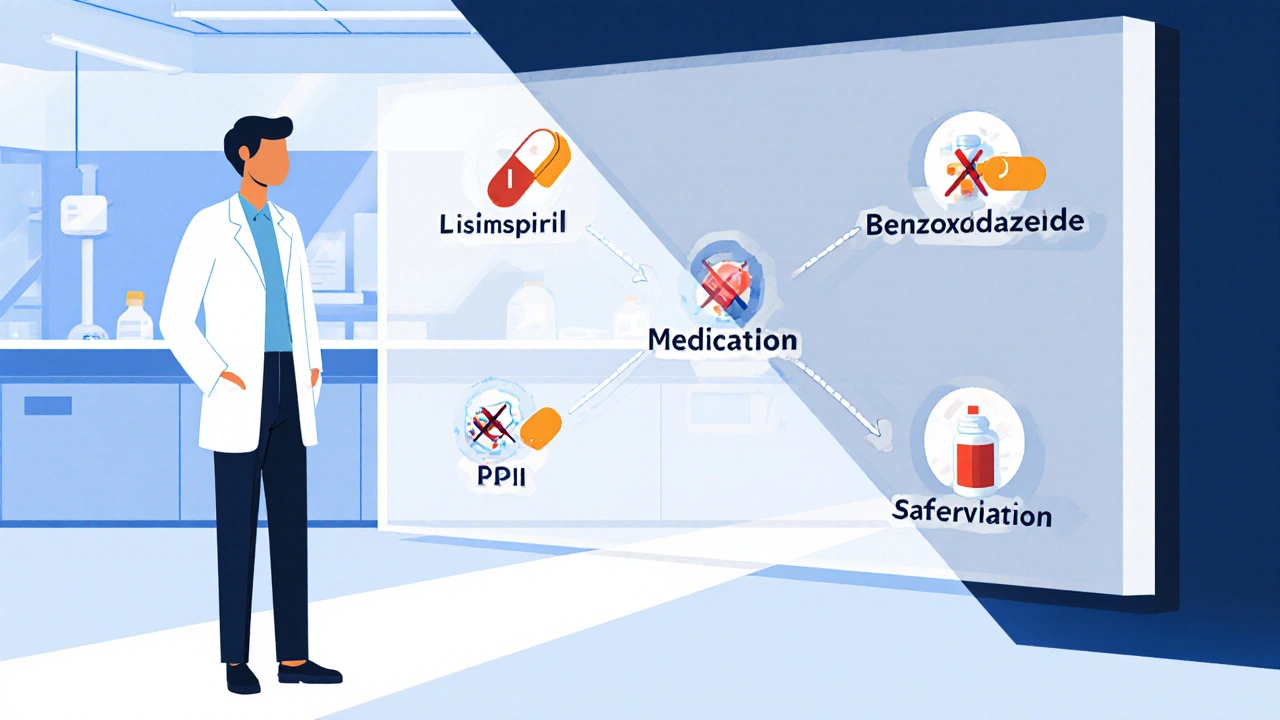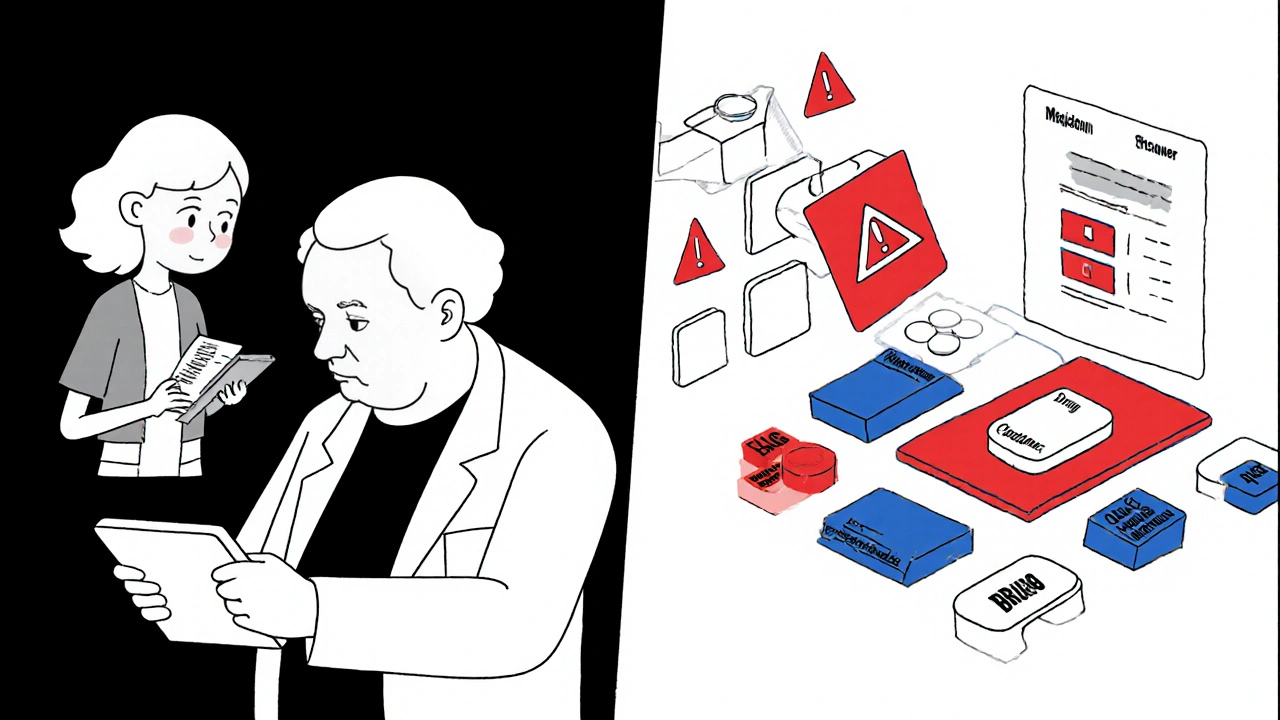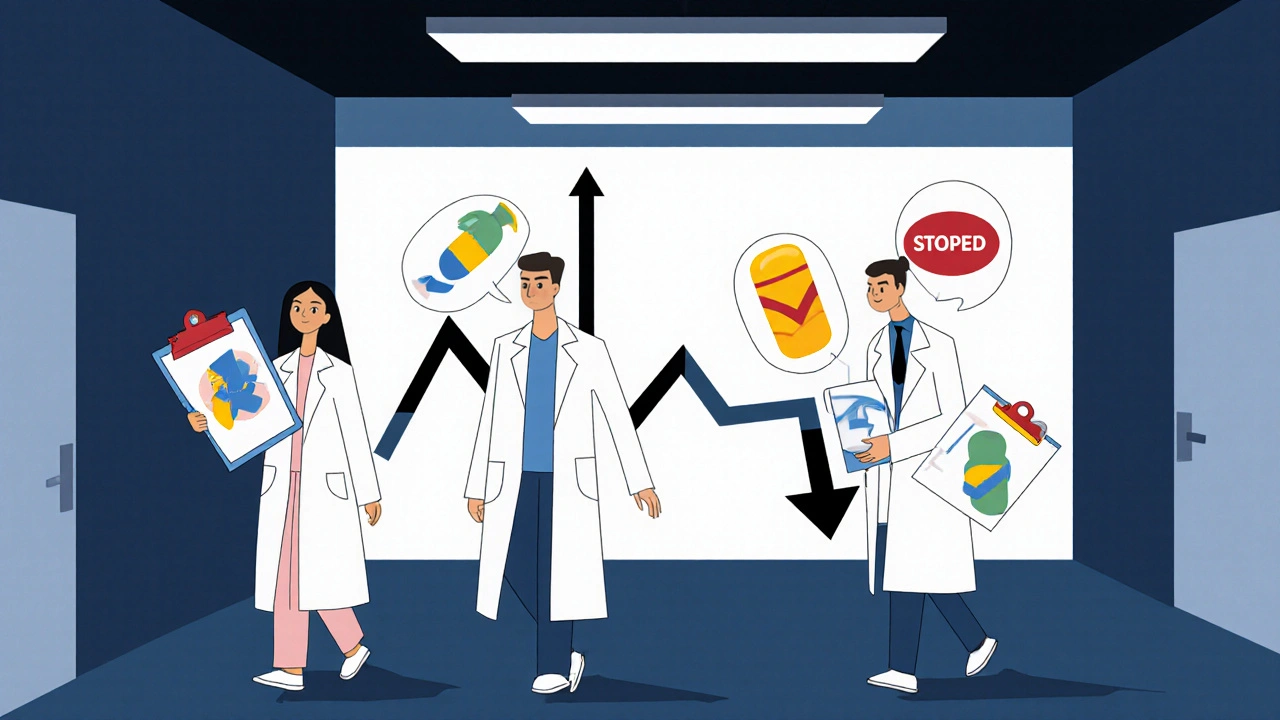Pharmacist-led substitution programs: how they work and what they achieve

When patients move from hospital to home, or from one care setting to another, their medications often get mixed up. A pill taken at home might be missed in the hospital records. A new drug prescribed in the ER might clash with something the patient’s been taking for years. These errors aren’t rare - they happen in nearly every third hospital admission. And the worst part? Many of them are preventable. That’s where pharmacist-led substitution programs come in.
What pharmacist-led substitution actually means
Pharmacist-led substitution isn’t just swapping one drug for another because it’s cheaper. It’s a structured, clinical process where pharmacists review every medication a patient is taking, compare it to what’s documented in their records, and make smart changes to improve safety and effectiveness. This includes stopping drugs that aren’t needed, switching to safer alternatives, or fixing dosage errors. These programs grew out of medication reconciliation efforts that became mandatory in U.S. hospitals after 2006. But it wasn’t until around 2010-2012 that hospitals realized pharmacists - not doctors or nurses - were best suited to do this work. Why? Because pharmacists spend years learning how drugs interact, how they’re metabolized, and what side effects to watch for. They’re the only clinicians trained specifically to spot these hidden risks. Today, 87% of U.S. academic medical centers and 63% of community hospitals have formal pharmacist-led substitution teams. These teams don’t just check boxes - they change outcomes.How these programs reduce harm and save money
The numbers speak clearly. Studies show pharmacist-led substitution programs cut adverse drug events (ADEs) by 49%. That means nearly half the dangerous reactions - like internal bleeding from blood thinners, kidney damage from NSAIDs, or confusion from anticholinergics - are avoided. In patients over 65 with five or more medications, the benefit is even bigger. One study found a 22% greater drop in 30-day hospital readmissions when pharmacists were involved compared to programs without them. For Medicare patients under the Hospital Readmissions Reduction Program (HRRP), that’s not just better care - it’s money saved. Hospitals with these programs pay $11.3% less in penalties each year. Cost savings? On average, each patient saves between $1,200 and $3,500. That’s from avoiding emergency visits, ICU stays, and extended hospitalizations caused by medication errors. In a single 300-bed hospital, that adds up to over $1 million a year. And it’s not just about stopping bad drugs. Pharmacists also help patients stop drugs they don’t need anymore. This is called deprescribing. In one study, over half of pharmacist recommendations focused on discontinuing medications - especially proton pump inhibitors (PPIs) and antipsychotics in the elderly. When PPIs were stopped safely, C. difficile infections dropped by 29%. When anticholinergics were removed, falls in seniors fell by 41%.How the program runs day to day
A typical pharmacist-led substitution program doesn’t rely on one person doing everything. It’s a team effort. Medication history technicians collect the patient’s full drug list - including over-the-counter meds, supplements, and herbal products - before the pharmacist even sees them. These technicians are trained for at least two hours in classroom learning and five full shifts of supervised work. After that, they complete medication histories with 92.3% accuracy. The pharmacist’s job is to compare that list to what’s in the electronic health record. On average, they find 3.7 discrepancies per patient. One patient might be taking lisinopril at home, but the hospital chart says they’re on losartan. Another might be on a high-dose benzodiazepine that hasn’t been reviewed in years. The pharmacist flags these, checks for interactions, and proposes changes. If there’s a non-formulary drug - meaning it’s not on the hospital’s approved list - the pharmacist suggests a safe, effective alternative. In one hospital system, 68.4% of non-formulary medications were successfully switched at admission. The whole process takes about 67 minutes per patient. That’s a lot of time. But it’s time well spent. To manage the workload, hospitals use a split model: technicians gather data, pharmacists focus on decisions. In high-volume units like the ER or ICU, teams work 12-hour shifts, sometimes 24/7.
Why doctors sometimes resist - and how to fix it
Not everyone welcomes pharmacist recommendations. In 43% of hospitals, physicians push back. Some don’t trust the pharmacist’s judgment. Others are too busy to review changes. A few simply don’t know the pharmacist is involved. Successful programs solve this with structure. Instead of sending a note saying, “I think you should stop this drug,” they use the electronic health record to auto-flag substitution opportunities. The doctor gets a pop-up: “Patient on warfarin at home. Current order: apixaban. Possible duplication. Click to review.” They also build trust through communication. Pharmacists attend morning rounds. They send clear, concise summaries with evidence - not opinions. One hospital saw physician acceptance jump from 28% to 67% after introducing standardized recommendation templates and monthly feedback meetings. Nurses are often the biggest advocates. In surveys, 92% of nurses say pharmacist-led substitution improves patient safety. They see fewer medication errors, fewer calls for help, and fewer confused patients.The hidden barriers: time, money, and policy
Despite the evidence, these programs still struggle to survive. Time is the biggest enemy. With staffing shortages and high patient volumes, many hospitals can’t justify the 67 minutes per patient. Rural hospitals are hit hardest - only 22% of critical access hospitals have full programs, compared to 89% in urban academic centers. Money is another problem. Only 32 states reimburse pharmacist-led substitution through Medicaid. Medicare Part D covers medication therapy management for 28.7 million people, but the paperwork is so complex that many pharmacists don’t bother. And reimbursement models haven’t caught up. Most hospitals pay pharmacists a salary - but don’t bill for the service. That means these programs are treated as a cost center, not a revenue generator. Yet they save more than they cost. The 2022 Consolidated Appropriations Act changed that a bit. It now requires medication reconciliation for all Medicare Advantage patients - creating a $420 million annual opportunity. And the 2024 CMS Interoperability Proposal could boost reimbursement by 18-22% if pharmacists can document substitutions electronically.
What’s next: AI, data, and wider access
The future of pharmacist-led substitution is digital. Pilot programs at 14 major hospitals are testing AI tools that scan patient records and automatically pull together medication histories. These tools cut data collection time by 35%. That means pharmacists spend less time typing and more time talking to patients. Research is also narrowing in on high-risk drugs. Deprescribing protocols for anticholinergics, benzodiazepines, and long-term opioids are now being standardized. New guidelines focus on specific populations - older adults, dialysis patients, those with dementia - where the risks are highest. And the scope is expanding. By 2023, 42% of skilled nursing facilities had pharmacist-led deprescribing programs - up from just 18% in 2020. More ACOs (accountable care organizations) are including pharmacist outcomes in their quality metrics. Sixty-three percent now track reduction in ADEs and readmissions as part of their contracts.What you need to know if you’re considering this
If you’re a hospital administrator, start small. Pick one unit - say, the medical floor - and run a pilot for three months. Use free tools from ASHP’s Medication Reconciliation Toolkit. Train two technicians. Assign one pharmacist. Track your ADEs and readmissions before and after. If you’re a pharmacist, push for formal training. ASHP and APhA now offer certification in medication reconciliation. Get it. Document everything. Use the electronic record to show your impact. If you’re a patient or family member, ask: “Was my medication list reviewed by a pharmacist before I left the hospital?” If the answer is no, ask why. This isn’t a luxury - it’s a safety net. The data is clear: pharmacist-led substitution programs work. They save lives. They save money. They reduce suffering. The only question left is: why aren’t more hospitals doing it?What exactly is a pharmacist-led substitution program?
A pharmacist-led substitution program is a structured clinical service where pharmacists review a patient’s full medication list, compare it to hospital records, and make evidence-based changes to improve safety and effectiveness. This includes stopping unnecessary drugs, switching to safer alternatives, correcting doses, and preventing interactions - especially during care transitions like hospital admission or discharge.
Do these programs really reduce hospital readmissions?
Yes. Studies show pharmacist-led programs reduce 30-day readmissions by an average of 11%, with some high-risk groups seeing drops as high as 22%. One major trial found that for every 12 patients who received comprehensive pharmacist intervention, one hospital readmission was prevented. Hospitals with these programs also pay significantly less in penalties under Medicare’s Hospital Readmissions Reduction Program.
Why are pharmacists better at this than doctors or nurses?
Pharmacists are the only healthcare professionals trained specifically in drug therapy - how drugs work, how they interact, what side effects to expect, and how to adjust doses for different conditions. While doctors focus on diagnosis and nurses on care coordination, pharmacists specialize in medication safety. This deep expertise makes them uniquely qualified to spot hidden risks in complex drug regimens.
Can these programs help with deprescribing?
Absolutely. In fact, deprescribing - stopping medications that are no longer needed or are too risky - is one of the most impactful parts of these programs. One study found that over half of pharmacist recommendations focused on discontinuing drugs, especially in older adults. Stopping proton pump inhibitors reduced C. difficile infections by 29%, and removing anticholinergics cut fall-related injuries by 41%.
Why don’t all hospitals have these programs?
The main barriers are time, staffing, and reimbursement. These programs require dedicated staff - pharmacists and trained technicians - and take about 67 minutes per patient. Many hospitals can’t afford to pay for this without direct reimbursement. Only 32 states reimburse these services through Medicaid, and Medicare’s administrative rules make billing difficult. Rural hospitals are especially affected due to pharmacist shortages.
How can patients benefit from these programs?
Patients benefit by avoiding dangerous drug interactions, reducing side effects, and preventing unnecessary hospital visits. They get clearer instructions at discharge, fewer medication errors, and better understanding of what they’re taking. For seniors on multiple drugs, this can mean the difference between staying independent at home and ending up back in the hospital.